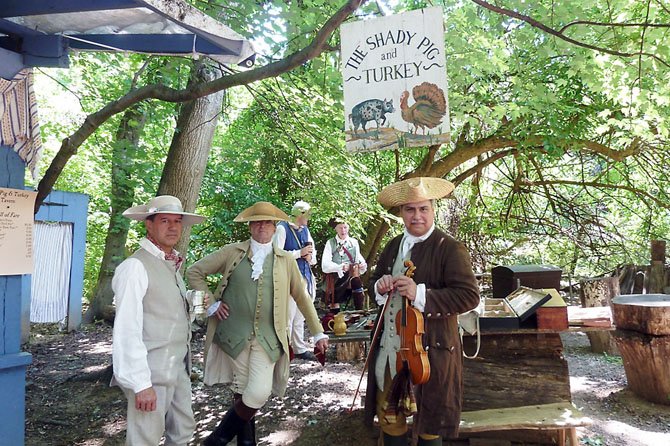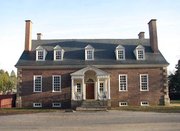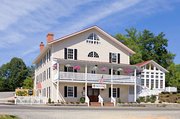The Claude Moore Colonial Farm, in McLean, is the only National Park run by a nonprofit organization. The 1771 farm offers a glimpse of what life was like for a poor farm family, just before the Revolutionary War. Photo contributed
George Washington slept here. He really did. And Mount Vernon, the first president’s historic Northern Virginia estate, is the nation’s most-visited historic home.
While not many properties can compete historically with Mount Vernon, Fairfax County is the site of many historic homes, farms and estates, from the Revolutionary War era through the American Civil War. But preserving historic homes can be prohibitively expensive, and are not for the financially timid.
In an effort to preserve publicly owned historic buildings, Fairfax County is currently drafting a plan for a resident curator program. If established, the county would make history as the first locality in the state to implement one.
“A successful resident curator program would allow the county to restore, maintain and protect important historic properties at little or no cost to the public.”
—Cindy Walsh, Fairfax County Park Authority’s Resource Management Division director
THE FUNDAMENTAL IDEA behind the resident curator program is to take some of the burden of maintaining historic properties off taxpayers by offering individuals and entities the opportunity to rehabilitate and maintain deteriorating buildings, at their own expense, in exchange for a long-term lease for little or no rent.
“A successful resident curator program would allow the county to restore, maintain and protect important historic properties at little or no cost to the public,” said Cindy Walsh, Fairfax County Park Authority’s Resource Management Division director. “In return, a curator will have an opportunity to live or conduct business in a property in Fairfax County that perhaps offers a great lesson in the history of the county.”
In addition to preserving significant historic buildings, Walsh said they could be put to practical use as residential, office or commercial space depending on how they are planned and zoned, community input and other factors.
What is a ‘Resident Curator Program?’
Resident curator programs identify publicly-owned historic properties with no immediate or practical public use and through an open and competitive process, select outside parties with skills, resources and vision to rehabilitate a property in accordance with accepted preservation standards for historic buildings. In exchange for rehabilitating the property, the curator gains use of the property and pays little or no rent. The county’s plan will set out standards for properties to qualify for the program, as well as identify specific sites as candidates. At a minimum, they must be eligible to be listed in the county’s Inventory of Historic Sites.
To learn more about the program, plan to attend one of two public meetings:
Thursday, Aug. 22, 7 p.m., Frying Pan Farm Park Visitor Center, 2709 West Ox Road, Herndon
Tuesday, Aug. 27, 7 p.m., Green Spring Gardens Park Horticulture Center, 4603 Green Spring Road, Alexandria
Under the program, curators would be required to provide opportunities for the public to visit and tour the properties in order to appreciate and understand their historic and architectural significance.
“Fairfax County, through a variety of means, continues to demonstrate its commitment to cultural stewardship and the preservation of historic places,” Walsh said.
The county has hired a historic preservation firm to develop the plan, and will hold two initial public meetings later this month to gather public input to determine how the program should operate.
After the resident curator plan is developed, the Fairfax County Board of Supervisors will determine the next steps for the proposed program.
“We encourage interested parties to join in the discussion and attend one of the two meetings,” Walsh said. “We are interested in diverse viewpoints and suggestions and hope in the long run we will find the perfect blend of past and present.”
The county hired John Milner Associates Inc. to write the plan, which is expected to be completed by May 2014. It will address a number of issues, including candidate properties and selection criteria; how the program should be administered; potential tax incentives; and responsibilities for potential curators and the county.
IN 2011, the Fairfax County Board of Supervisors directed staff to work with the History Commission to evaluate a Resident Curator Program. In conjunction with the commission, the Fairfax County Department of Planning and Zoning and Fairfax County Park Authority are jointly managing this study.
For more information, visit the Resident Curator Implementation Study web page, or call the Park Authority Public Information Office at 703-324-8662, TTY 711.




